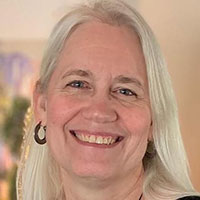

Executive Editor, MAJOR GIFTS TODAY
What happens to the philanthropic passions of your long-term supporters when they pass away? By approaching these donors about planned giving, you will acknowledge their ongoing support for your organization and show them how they can fit into your long-term plan. Asking long-term donors about planned gifts is rarely taken the wrong way, so start the conversation! Reach out to donors who have given consistently over the past decade, regardless of the amount, with a personalized letter something like this:
Mr. and Mrs. Smith, you have been stalwart supporters of our projects, and your generosity over the years speaks to how much you value our mission. We sincerely thank you.
As we take stock of our biggest supporters and consider how we will overcome various obstacles over the next decade and beyond, we realize how much we have been able to accomplish because of your ongoing investment in our mission. Because of that, we can also recognize how detrimental it would be to lose your support one day.
For this reason, we would like to speak with you about making a planned gift to our organization—a revocable gift that costs you nothing during your lifetime but will have a meaningful impact on the area we serve forever. It would be a disservice to those we serve if we did not ask you to consider naming us in your estate plan.
I sincerely hope that we may have the opportunity to discuss this further with you in person, and I look forward to serving as a steward to your charitable support.
Sometimes the best answer you’ll get is “Thank you, but not right now.” Those on the fence may sit on the idea before deciding. Don’t be afraid to follow up after a bit. Be courteous, offer help when able, and respect their boundaries. Their initial “no” may not be forever, and the “why” behind the “no” is important information for your organization. When donors say they plan to leave their whole estate to their children and it will be up to them to decide how to use it, they open a door for you. If their adult children are not on your prospect list, you have just found a reason to reach out and introduce yourself and your organization!
By starting the conversation, you gain more commitments, get prospects thinking about charitable and financial ambitions, and learn more about opportunities their existing intentions can bring.
Consider the recruitment opportunities for your organization that these stats indicate:
Random interesting stats presented monthly from various sources.